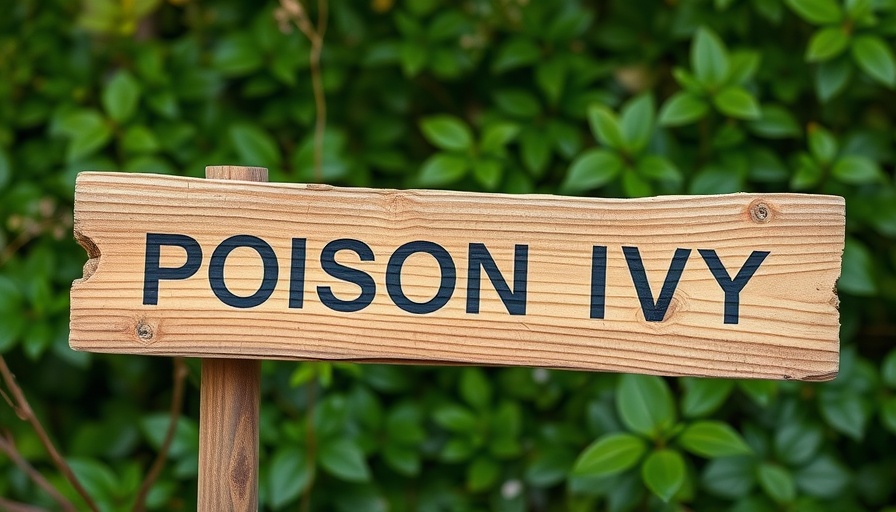
Understanding Poison Ivy and Its Effects
Poison ivy, a notorious plant found across North America, is infamous for causing skin irritation and allergic reactions. Each year, countless individuals find themselves dealing with its discomfort after an unsuspecting encounter. This demand for quick action arises from understanding that immediate cleaning is essential to avoid a more extensive reaction. To prevent the spread of the oil from its leaves, known as urushiol, thorough cleanup becomes unavoidable.
3 Critical Items to Clean After Contact with Poison Ivy
If you've had a run-in with poison ivy, it's vital to act promptly. Here are three essential items you need to clean thoroughly:
Clothing and Footwear
Your clothing is the first line of defense against urushiol. Immediately remove any clothing that may have come into contact with the plant. Be sure to wash them separately in hot water with detergent. If your shoes have ventured into the foliage, scrub them meticulously. This ensures that the oils do not linger, leading to potential outbreaks on your skin.
Gardening Tools and Gear
Homeowners and lawn care professionals alike often use tools that can collect urushiol when working outdoors. Cleaning tools like pruners, gloves, and rakes with soap and water reduces the likelihood of re-exposure. This step cannot be stressed enough, especially for those in the landscaping field where garden maintenance is ongoing throughout the seasons. Rinse them to remove any remnants, as even a small amount can be troublesome.
Skin Management
After decontaminating your gear and clothing, the next step is to wash your skin as soon as possible. Use a product specifically designed to neutralize urushiol if available. Otherwise, a thorough cleanse with soap and water is effective. Ensure you focus on under the fingernails and any crevices where oil may hide. This helps control the reaction and is especially important during peak outdoor seasons when poison ivy is more prevalent.
Prevention and Resources
Besides tackling existing issues, homeowners should familiarize themselves with outdoor knowledge that helps avoid future encounters. Joining local lawn care or landscaping clubs can provide guidance on identifying poison ivy and other harmful plants. Moreover, engaging with Northern Lawn Care for annual maintenance can reduce the risk of poison ivy in your garden by providing weed control services and regular landscape care.
Conclusion: Taking the Next Step
Dealing with poison ivy can throw a wrench into your outdoor plans, but swift and thorough cleaning can mitigate the experience dramatically. Understand the importance of washing not only your clothing and tools but also your skin to prevent irritation. For ongoing assistance with your lawn and garden and to help reduce encounters with unwanted plants, call Everett Lucas today. Let the experts handle your lawn care needs, ensuring your outdoor space is safe and enjoyable.
 Add Row
Add Row 
 Add
Add 


Write A Comment